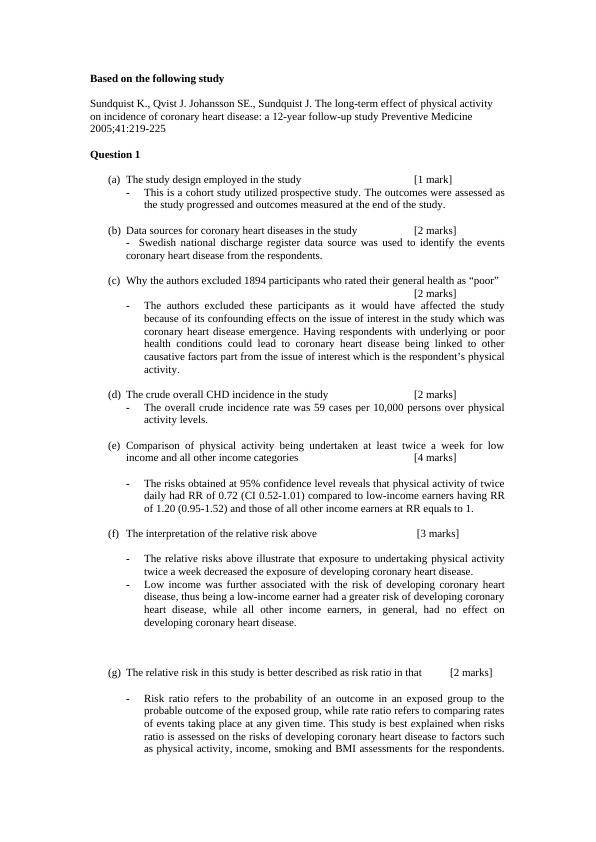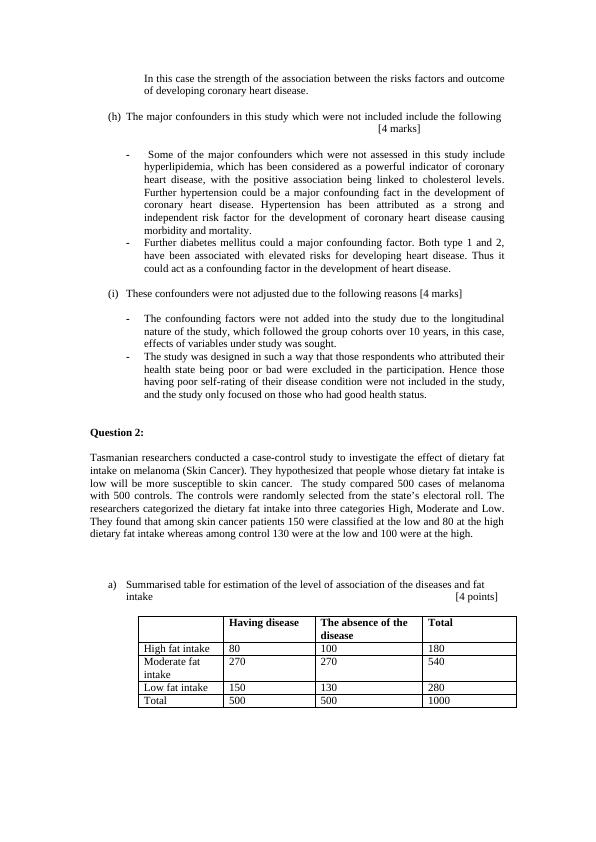Study on the Long-term Effect of Physical Activity on Incidence of Coronary Heart Disease and a Case-Control Study on the Effect of Dietary Fat Intake on Melanoma
This study analyzed the long-term effect of leisure-time physical activity on incident cases of coronary heart disease (CHD) among women and men.
7 Pages2224 Words135 Views
Added on 2023-06-04
About This Document
This article discusses a study on the long-term effect of physical activity on the incidence of coronary heart disease and a case-control study on the effect of dietary fat intake on melanoma. It covers the study design, data sources, relative risks, confounding factors, and biases in cohort and case-control studies. The article also explains the effect of participant loss in a study. The subject, course code, course name, and college/university are not mentioned.
Study on the Long-term Effect of Physical Activity on Incidence of Coronary Heart Disease and a Case-Control Study on the Effect of Dietary Fat Intake on Melanoma
This study analyzed the long-term effect of leisure-time physical activity on incident cases of coronary heart disease (CHD) among women and men.
Added on 2023-06-04
ShareRelated Documents
End of preview
Want to access all the pages? Upload your documents or become a member.
Research Study on Long-term Effect of Physical Activity on Incidence of Coronary Heart Disease
|8
|2299
|302
Cohort Study on Physical Activity and CHD, Case-Control Study on Dietary Fat and Skin Cancer, Bias in Cohort and Case-Control Studies
|8
|1975
|461
Epidemiology Assignment | Effects of a Drug
|12
|1943
|192
Introduction to Epidemiology Assignment
|14
|2280
|298
Medical Assignment on Study Design, Identification of Coronary Heart Disease, Multivitamins and Cardiovascular Mortality
|7
|1509
|190
Sampling Frame and Disease Risk Assessment in Epidemiology
|6
|1345
|444



